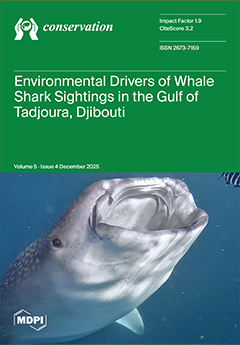Environmental and ancient DNA are mostly present in degraded forms in nature. Plant forensics is necessary for plants like
Taxus (
Taxaceae), which is a medicinal, as well as poisonous, endangered plant. We designed a study to develop high-efficiency PCR mini-barcoding primers
[...] Read more.
Environmental and ancient DNA are mostly present in degraded forms in nature. Plant forensics is necessary for plants like
Taxus (
Taxaceae), which is a medicinal, as well as poisonous, endangered plant. We designed a study to develop high-efficiency PCR mini-barcoding primers for the identification of
Taxus. We collected environmental materials, fresh and old
Taxus specimens from natural habitats, herbaria, and ex situ propagation sites. Taxon-specific mini-barcoding primers were prepared through primer3. All the primers were amplified onto
Taxus specimens and environmental samples having
Taxus DNA, while no amplification on fresh and herbarium specimens other than
Taxus was noted. DNA sequencing of amplified regions of matK, ITS, and rbcL yielded lengths of 117, 175, and 200 bp. Blast taxonomy showed 100% identification power at the genus level, while 75–93% at the species level, and identified a total of 30 taxa within the genus
Taxus, comprising 16 species, 5 varieties, 2 hybrids, and 7 variants. ITS was the most specific for genus identification, followed by matK and rbcL. Environmental, trade, socio-economic, and toxicological crimes were also identified. Our high-efficiency PCR mini-barcoding method can be useful in the prevention of
Taxus illegal trade and habitat degradation to mitigate climate change in the Himalayan region of Pakistan.
Full article





